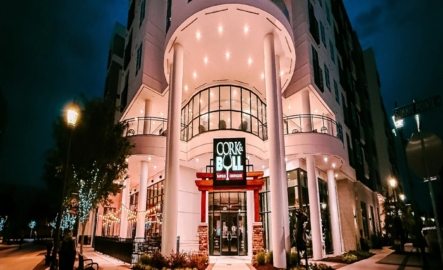Last week, the only two coaches who are men of colour, or Afro-Brazilian, in the 20-team Brazilian top-flight soccer league, Serie A, protested what they see as an uptick in racial discrimination under the reign of President Jair Bolsonaro.
The men wore anti-racism T-shirts for the TV cameras for the entirety of the game. This was after they had hugged and held hands symbolising their joint intention.
Marco Aurelio de Oliveira or “Marcao” of Fluminense and Roger Machado of Bahia, are the only two Afro-Bazilian men who get to field players in the league of a country where over 50% identify as Afro-Brazilian, that is, black (preto) and mixed-leaning-black (pardo).
Even if you did not know the whole, the statement – “only two Afro-Brazilian coaches in Brazil’s top league” – should surprise you.
Brazil, the land of Pelé, Jairzinho, Romario, Rivaldo, Ronaldinho and Neymar. That Brazil that has held the world spellbound with it is prolific production of talents we can visibly tell are not white.
/cdn.vox-cdn.com/uploads/chorus_image/image/58819277/image.0.jpg)
Predictably, there was backlash from certain quarters against the two coaches. Those who protested against the anti-racism efforts affirmed that racism in Brazil was either non-existent or insignificant.
But in his post-game interview, Marcao ranted, from a depth in his soul only frustration and confoundment could be: “If there is no prejudice in Brazil, why do black people receive a poorer education? Why is 70% of the prison population black? Why are young black people more likely to be killed in Brazil? Why do lower salaries go to black men and women? Why, among white and black women, are black women more likely to be killed? How many black women are there in sports journalism? If there’s no prejudice in Brazil, what are the responses to these questions?”
Legitimate questions, if one is willing to accommodate some data.
Famous for its “beach culture”, one would think Brazil’s beaches were open to all who are willing. But in a 2015 report published by Hugo Barbosa de Gusmao, and confirmed by officials of Brazil’s National School of Statistical Sciences, it was revealed the fanciest beaches in Rio de Janeiro were in locations with 80-90% white populations.
A successfully segregated settlement pattern had alienated black and mixed-race people from accessing nice beaches.
Equally damning, a 2017 paper by Justin Bucciferro titled “Racial Inequality in Brazil from Independence to the Present” noted that although the wealth gap between Brazil’s “races” have improved in the last century, it was only in the last 10 years that the white-black gap was narrowed since 1960.
Bucciferro also explored how Brazil’s post-independence treatment of race has contributed to the economic wellbeing of its people.
He writes: “Racial identity may be fungible, but the schemas employed in Brazil nonetheless correspond to real social divisions, shaped by ancestry as well as class.”
Simply put, the lighter your skin, the better your chances of daily bread and roof over your head.
This is where the favelas come in. The favelas, named after a kind of tree, are the ghettoized settlements that arose in the early 1900s due to urbanisation that failed to manage trans-town migration.
But the favelas, starting in the 1940s and 50s, became home to a majority of Brazil’s blacks whose lot had not been significantly bettered after independence in 1822.
These Afro-Brazilians naturally took up low-wage jobs and could not afford urban housing in big cities such as Rio and Brasilia. According to recent numbers, close to 70% of people in all of Brazil’s favelas are Afro-Bazilian.
For people with very few opportunities at social mobility, in many ways, soccer was a saving grace for Afro-Brazilian. It was a way out of crime and violence for most young men who already carry the baggage of their skin colour.

Talking to the UK’s Independent in 2014, World Cup winner Tostao asserted of poverty and football in his country: “It is a huge country and one that has never managed to free itself from poverty. Thousands of children, instead of having access to good public schools and growing up with opportunities, end up playing football and dreaming about becoming professional and famous. This keeps the skill level so high. It’s a lot of kids chasing after just one ball. And every now and again a Neymar, Romario, Ronaldo appears. It’s inevitable.”
These people got into football, chiefly, to make ends meet for themselves and their family. This is a headache that is not shared by white Brazilians in equal volume.
But as it is the case perhaps, anywhere race relations is topical, racial identity among Brazil’s Afro-Brazilians is a tricky subject.
In 2010, Paris Saint-Germain forward Neymar got into his first bath of hot waters when he was asked if he had ever experienced racism.
The then 18-year-old replied: “Never. Not in the field, nor outside of it. It’s not like I’m black, you know?” The infuriated responses were immediate, with many asking if he was living in a different Brazil than they were.
We do not know if he regrets his answer in hindsight. But it is clear his sense of racial identity was informed by having a white mother and black father; in the US, they would call that colorism.
But perhaps, Neymar’s dilemma also points to the role class plays in racial identification. As a man who grew up in a favela but knew success at quite a young age, Neymar probably finds no urgency in identifying a similarity between himself and overwhelmingly less fortunate Afro-Brazilians.
But his feelings will change little. History and present structures permitting, there will be more Brazilian soccer stars who look like him.










